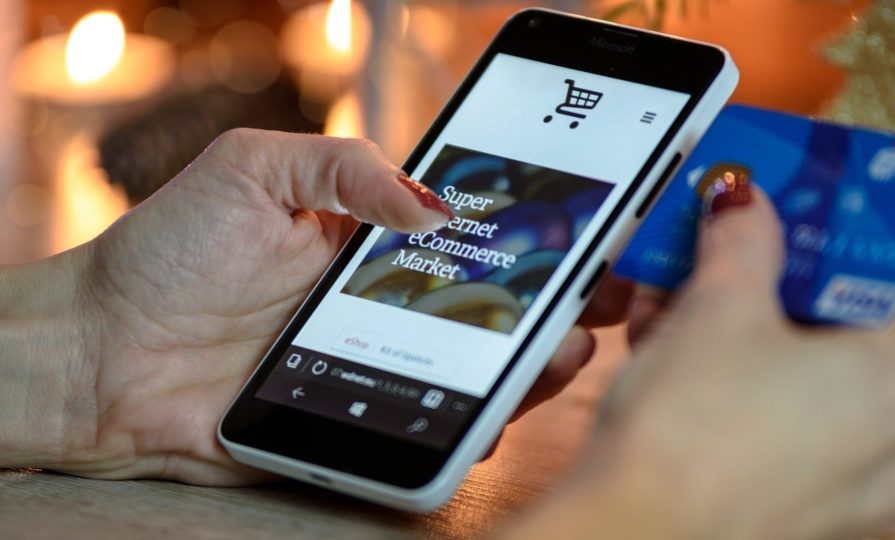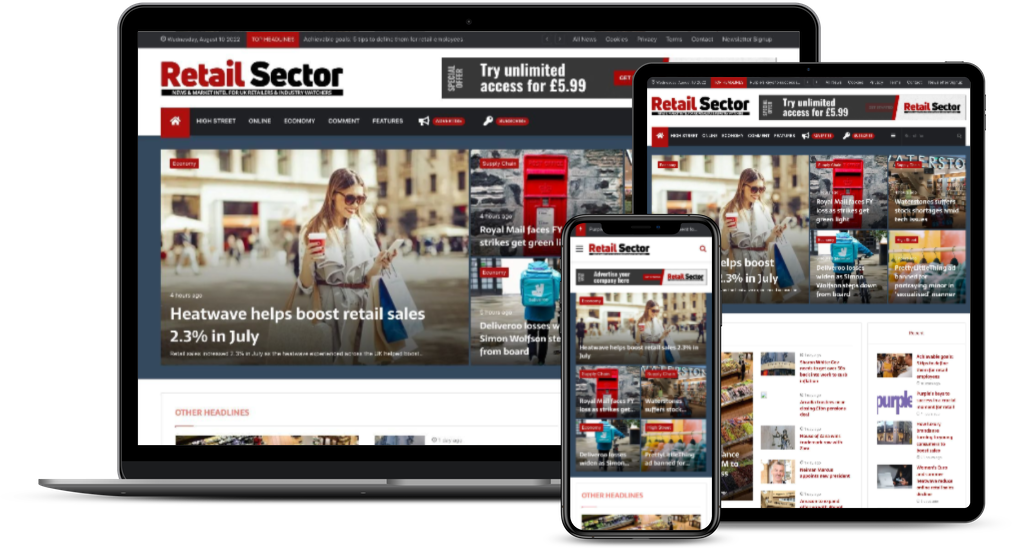The future of checkout: how retailers can win customers
As UK shoppers demand faster, frictionless, and secure checkout experiences, retailers must adapt to a rapidly changing landscape. Retail Sector spoke to industry experts about the challenges and opportunities in optimising checkout processes, from behavioural science insights to the latest in payment technology, to find out how retailers can meet consumer expectations while ensuring security

In an era where convenience reigns supreme, UK consumers have developed a notoriously low tolerance for friction at checkout. The latest research from financial technology provider payabl. underscores just how critical a seamless payment experience has become.
According to the findings, 43% of shoppers across the UK, Germany, and the Netherlands said they would not return to a retailer after a poor online checkout experience. Among UK shoppers, nearly half (44%) cited a cumbersome checkout process as the primary reason for abandoning their shopping baskets — far higher than their German (29%) and Dutch (36%) counterparts.
Retailers now face an increasing challenge: delivering a checkout experience that is not just fast but also secure and intuitive. As digital commerce expands, brick-and-mortar retailers are also rethinking their in-store checkout processes. With technologies like RFID and behavioral science-backed design strategies emerging as game-changers, retailers must navigate the fine line between reducing friction and maintaining trust.
The toll of a slow checkout
Checkout is the final step in a shopper’s journey: a moment that should feel like a natural conclusion, not a last-minute hurdle. Yet, for many consumers, especially in the UK, a slow or frustrating checkout experience becomes a dealbreaker.
The latest research from payabl. highlights how intolerant UK shoppers are of any friction at checkout, with nearly half (44%) abandoning their carts due to cumbersome processes. But why does checkout friction feel so disruptive? The answer lies in human psychology.
Patrick Young, managing director of PRS IN VIVO, a leading research consultancy specializing in behavioural science, explains that the checkout stage is not just a transactional moment but a highly sensitive psychological space where shoppers evaluate effort, risk, and reward in real-time.
“UK shoppers are some of the most demanding in the world when it comes to digital retail. Conditioned by years of fierce competition, near-instant delivery, and frictionless mobile payments, they’ve developed a behavioural intolerance to anything that slows them down,” Young says.
At this stage, the shopper has already invested time and effort in selecting their items, mentally committing to the purchase. However, the decision is not finalized, making it a precarious point where any additional burden, whether a confusing form, a surprise delivery fee, or a slow-loading payment screen, can lead to hesitation.
“From a behavioural science perspective, the checkout stage is a moment of truth. The shopper has invested time, energy, and intention—but they haven’t yet committed. This is a highly sensitive cognitive space, where effort feels amplified and risk feels heightened. Every additional step creates what psychologists call ‘cognitive load.’ The brain, seeking ease and certainty, begins to question whether the purchase is worth the mental effort. That’s when abandonment happens—not necessarily because the shopper changed their mind, but because the process made them feel uncertain or overburdened,” says Young.
Retailers must recognise that seemingly minor checkout inefficiencies can trigger powerful psychological responses. Loss aversion, for example, makes unexpected costs like hidden fees feel negative, often leading customers to abandon their purchases entirely. Additionally, status quo bias explains why one-click checkouts and stored payment options feel so appealing: familiarity creates a sense of ease and security.
To combat these friction points, Young advises retailers to take a strategic approach to checkout design. “Remove unnecessary decision points. Every additional choice – especially when poorly designed – risks triggering choice overload. Use smart defaults, clear calls to action, and thoughtful visual hierarchy to guide the shopper,” he recommends.
By reducing mental strain and creating a seamless path to purchase, retailers can minimize abandonment rates and create a more satisfying shopping experience. The challenge is clear: checkout should not feel like an obstacle course.
The rising demand for speed and convenience
The research from payabl. revealed that UK consumers expect frictionless online experiences, with nearly half of UK shoppers (44%) abandoning their online baskets due to cumbersome checkout processes. This number is significantly higher than shoppers in Germany (29%) and the Netherlands (36%), emphasising the UK’s unique demand for speed. However, it is not just speed that matters to these shoppers – it’s also about the certainty that comes with a simple and secure process.
Breno Oliveira, CEO of payabl., highlights this shift in consumer expectations, particularly in the UK: “The UK consumer has taken to eCommerce like a fish to water, and while it’s good news for merchants in many respects, when the checkout experience is poor, UK consumers are less likely to return,” he says. “Speed and convenience trump all else for many, with security expected without introducing any friction.”
As retailers focus on improving speed, it’s crucial that they also meet customers’ expectations for security. While many UK consumers are willing to sacrifice some level of fraud protection to speed up the process, a delicate balance must be maintained. With a growing number of online transactions, security risks remain an ongoing challenge for e-commerce platforms.
One of the more surprising findings in payabl.’s research is the willingness of UK shoppers to compromise on security for the sake of speed. According to the report, 32% of UK shoppers would be willing to reduce fraud protection measures to achieve a faster checkout experience, and 25% would even be happy to forgo fraud protection entirely. These figures are much higher than those in Germany (12%) and the Netherlands (17%), who are less likely to sacrifice security.
Despite the desire for speed, Oliveira emphasises that security should not be sacrificed. “Providing robust security and fraud protections remain table stakes for serving UK consumers well, with regulators focused firmly on the role of industry players in keeping shoppers safe,” he says.
For retailers, the challenge lies in providing the security shoppers expect without introducing friction. While shoppers might be willing to forgo certain fraud protection measures for the sake of speed, they still want to feel reassured that their payment details are safe. As Oliveira notes: “This demand for frictionless checkouts is influencing the views of shoppers when it comes to storing their payment details online and their willingness to forgo security checks. The UK has taken action in recent years to increase protections against fraud losses, with consumers now the most likely across major markets to be reimbursed. These protections may be influencing consumer attitudes and making fraud feel like less of a risk than in other countries.”
Is RFID a solution?
As UK consumers demand faster and more secure checkouts, retailers must ensure that they create a sense of control and trust throughout the transaction process. This involves using design cues and technologies that reassure shoppers without adding unnecessary complexity.
“Consumers rarely say they want ‘more security’—they want to feel in control,” says Young. “Design cues, like recognizable payment logos, simple visual confirmation of progress, and familiar language, offer subconscious reassurance. The goal isn’t to eliminate friction entirely, but to make it feel seamless and intuitive.”
For brick-and-mortar retailers, eliminating friction at checkout requires an investment in technology. One of the most promising innovations is RFID-powered checkout, which eliminates the need for manual barcode scanning and enables customers to complete transactions in seconds. Amber Hovious, VP of marketing and partnerships at Teamwork Commerce, explains how this technology directly addresses cart abandonment and checkout inefficiencies.
“RFID technology minimises cart abandonment rates by directly addressing shoppers’ common pain points—long queues, waiting times, friction, and a poor checkout experience. RFID-powered self-checkout streamlines the entire checkout process, making it faster, smoother, and seamless,” Hovious states.
Unlike traditional barcode scanners, RFID systems can read multiple items at once, allowing customers to place their purchases in a designated checkout zone and complete their transaction instantly.
“This dramatically reduces wait times and speeds up the entire checkout process,” says Hovious. “Additionally, advanced RFID-powered checkout systems, combined with modern payment technology, allow retailers to accept more payment methods, which greatly lessens the risk of an abandoned sale.”
Beyond speed, RFID also enhances the overall shopping experience by creating real-time inventory visibility. This is particularly valuable for retailers managing high SKU counts, such as fashion and apparel brands.
“Tracking all products at the item-level from manufacture to sale, RFID technology enables retailers to create complete visibility of their entire inventory. Staff can use this information to seamlessly cater to customers,” she notes.
One of the more surprising insights from the payabl. research was the willingness of UK consumers to trade security for speed. A significant 32% of UK shoppers said they would be willing to reduce some online fraud protection measures to achieve a faster checkout experience, while 25% would be happy to remove them entirely. This contrasts sharply with the attitudes of German (12%) and Dutch (17%) shoppers, who were far more reluctant to compromise security.
Despite this willingness to bypass fraud protection, retailers cannot afford to take risks with payment security. Fraud remains a significant concern, with UK e-commerce losses exceeding £360.5m in 2023 alone.
Hovious emphasizes that RFID can help maintain strong fraud protection without adding friction: “RFID tags allow retailers to track products in real-time, reducing the risk of fraud without slowing down the shopping experience. RFID-powered systems operate with each item attached with a unique RFID tag that communicates with scanners at checkout. This is capable of automatically identifying items and verifying whether they’ve been paid for.”
The ability to detect unpaid items or suspicious activity without requiring additional customer intervention is a crucial advantage of RFID technology.
“Additionally, with improved real-time inventory visibility facilitated by RFID, retailers can ensure that only genuine items are accepted while processing transactions for order fulfilment and returns,” Hovious adds.
Future-proofing the checkout experience
As retailers look to the future, seamless checkout experiences will continue to be a key differentiator. Young reminds retailers that “the goal isn’t to eliminate friction entirely, but to make it feel seamless and intuitive.”
Hovious agrees, adding that RFID should be integrated holistically within a retailer’s ecosystem: “Brands should focus on more than just speed—they should think about the entire customer journey. RFID can eliminate long queues, enable scan-free self-checkout, and even power walkout shopping experiences. However, to truly leverage the potential and deliver value, the tech needs to be integrated with existing POS, inventory, and fulfilment systems.”
As UK consumers demand faster, more convenient, and more secure checkout experiences, retailers must rethink their checkout strategies. Whether through behavioral science-driven design improvements or cutting-edge technologies like RFID, the key to success lies in balancing speed with security—delivering a seamless experience without undermining consumer trust.



